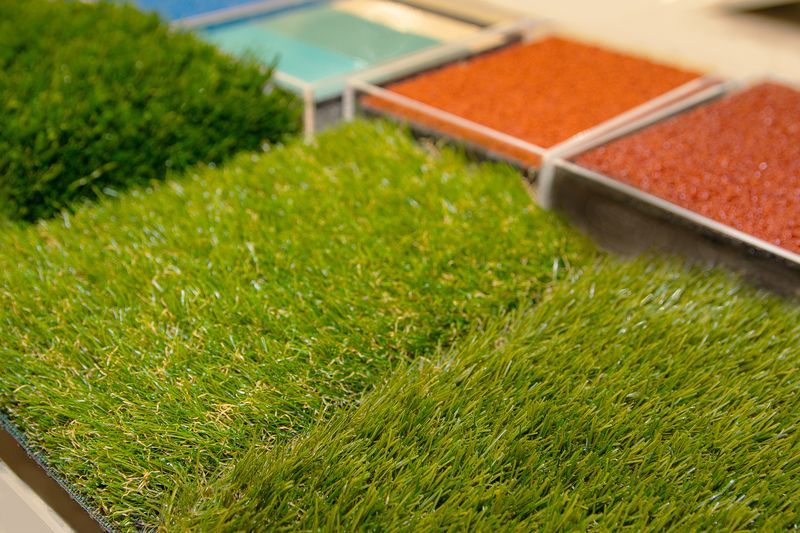Sustainable Landscaping in California: A Guide to Drought-Resistant Gardens
In California, creating a sustainable landscape is crucial, especially with the ongoing challenges of drought. Drought-resistant gardens offer a solution, providing beauty while conserving water. This guide offers practical tips and advice for homeowners looking to create lush, eco-friendly landscapes that thrive in California's climate.
California's Climate Zones
For anyone involved in landscaping or gardening in California, a primary consideration is the state's diverse climate zones. Recognizing these variations is crucial for selecting plants that will thrive in your garden. California's vast expanse encompasses several distinct climates, each offering unique challenges and opportunities for landscaping.
The importance of understanding these
climate zones cannot be overstated. It impacts everything from the type of plants that can be grown to the timing of planting and the necessary care and maintenance. Selecting plants well-suited to the local climate zone ensures not just survival but vibrant growth, reducing the need for excessive watering, fertilization, and other maintenance practices that can be both time-consuming and costly.
Overview of the Main Climate Zones in California
California's climates can broadly be categorized into three main zones: Coastal, Desert, and Mediterranean. Each of these zones has distinct characteristics that influence landscaping decisions.
Coastal Zones are characterized by mild temperatures year-round, with moisture from the ocean providing a cooling effect during the summer months. This climate supports a wide range of plant life, particularly those that thrive in moderate conditions.
Desert Zones, found primarily in Southern California, feature hot, dry summers and cold winters. Plants selected for these areas need to be hardy and drought-resistant, capable of surviving with minimal water.
Mediterranean Zones cover much of central and northern California. These areas experience warm, dry summers and mild, wet winters. Plants in this zone need to be able to withstand a dry summer climate.
For more detailed guidance on selecting plants, a reference to the
USDA Hardiness Zones can be invaluable. The USDA map divides the country into zones based on the average annual minimum winter temperature. By determining your specific zone, you can select plants that are most likely to succeed in your local climate.
Understanding California's diverse climates and utilizing resources like the USDA Hardiness Zones map are foundational steps in effective landscaping. By aligning your garden's plant selection with these climate considerations, you can ensure a lush, thriving landscape that compliments California's natural beauty.
Selecting Drought-Resistant Native Plants
In the face of California's unique climatic challenges, particularly its proneness to drought, selecting drought-resistant native plants for landscaping is more than a matter of aesthetics; it's a commitment to ecological stewardship. Native plants are those that occur naturally in the region in which they evolved. By choosing these for landscaping, gardeners and homeowners can enjoy a myriad of benefits.
The Ecological Benefits of Choosing Native Species
Firstly, water conservation is a critical concern in California. Native plants are well-adapted to survive in their local climate, often requiring far less water than non-native or exotic species. This adaptation not just conserves water but also reduces the need for supplementary irrigation, preserving valuable resources.
Native plants provide essential support to local wildlife. They offer food, shelter, and breeding habitats for various species of birds, bees, butterflies, and other wildlife. This aspect of native plants helps to maintain biodiversity and supports pollinator populations that are essential for a healthy ecosystem.
Disease resistance is another significant benefit. Native plants are generally more resistant to pests and diseases prevalent in their local environment. This reduces the need for chemical interventions, such as pesticides and fungicides, making your garden safer for wildlife and humans alike.
List of Drought-Resistant Native Plants Suitable for California Landscaping
Many drought-resistant native plants can beautify your landscape while offering ecological benefits. Some notable examples include:
California Poppy (Eschscholzia californica) - The state flower adds vibrant red, orange, and yellow hues to the garden and thrives in full sun with minimal water.
Manzanita (Arctostaphylos spp.) - With its beautiful red bark and pink or white flowers, Manzanita is both aesthetically pleasing and highly drought-tolerant.
Coyote Brush (Baccharis pilularis) - A sturdy shrub that provides excellent ground cover and attracts a variety of wildlife with its fluffy seed heads.
Highlighting Benefits in Landscape Design
When integrating these plants into the landscape, consider their low maintenance, aesthetic appeal, and eco-friendliness. For instance, a garden designed with varied elevations can showcase the natural beauty of Manzanita's red bark against a backdrop of California Poppy’s vivid colors. Such a garden requires less maintenance, cutting down on the need for mowing, watering, and the application of fertilizers and pesticides.
Opting for drought-resistant native plants in California landscaping is not only practical in terms of water conservation and maintenance but also beneficial for the local ecosystem. By carefully selecting and integrating these plants, you can create a beautiful landscape that thrives in harmony with its natural surroundings.
Planting Tips for California Gardens
Creating a thriving garden in California’s diverse and challenging climate requires more than just selecting the right plants. Equally important are the planting techniques and ongoing care strategies that ensure the health and beauty of your landscape. Here, we’ll navigate through the best practices for planting in California, focusing on soil management, water conservation, garden aesthetics, and seasonal care.
California’s Unique Soil Types
California’s soil is as varied as its climate, ranging from the rich loams of the coastal areas to the sandy soils of the deserts. Knowing your soil type is crucial, as it influences watering needs, aeration, and the choice of plants. For heavy clay soils, amending with compost can improve drainage and aeration, while sandy soils may benefit from organic matter to enhance water retention.
Strategies for Irrigation and Water Conservation
In a state prone to drought, efficient watering practices are key. Drip irrigation systems deliver water directly to the roots of plants, minimizing evaporation and runoff. Using a mulch layer helps retain soil moisture and reduces the need for frequent watering. Grouping plants with similar water needs together ensures that none are over or under-watered, promoting healthy growth and conserving water.
Arranging Plants for Maximum Impact
The arrangement of plants in the garden can influence not only its aesthetic appeal but also its ecological balance. Consider designing with layers, placing taller drought-resistant trees and shrubs at the back and shorter flowering perennials in the front. This not only creates depth and interest but also supports biodiversity by providing varied habitats for beneficial insects and wildlife.
Seasonal Care Considerations
Seasonal changes in California can be dramatic, and your garden care routine should adapt accordingly. In spring, focus on planting and refreshing mulch to conserve moisture for the dry months ahead. Summer calls for vigilant watering and monitoring for pests. Come fall, it’s time to plant native perennials and undertake major pruning tasks, as plants enter dormancy. Winter, mild in most of California, is ideal for planning upcoming garden projects and planting bare-root trees and shrubs. Through mindful planting and care, Californian gardeners can cultivate landscapes that are not only beautiful and low-maintenance but also in harmony with the local environment. By respecting California’s unique climate and ecological conditions, we can ensure our gardens are resilient, water-wise, and vibrant year-round. Successful landscaping in California hinges on a deep understanding of the local environment.
By selecting drought-resistant native plants, managing soil health, employing efficient water conservation techniques, and adapting to seasonal changes, gardeners can create sustainable and flourishing gardens that enhance the natural beauty of the Golden State.
Ready to transform your outdoor space into a beautiful, drought-resistant garden?
Contact California Exteriors Inc today for expert advice and assistance.












